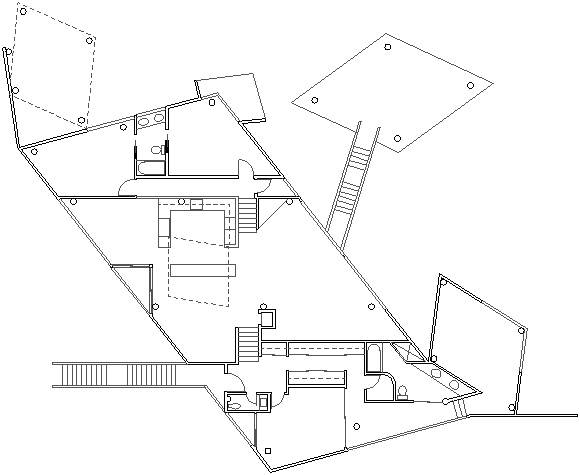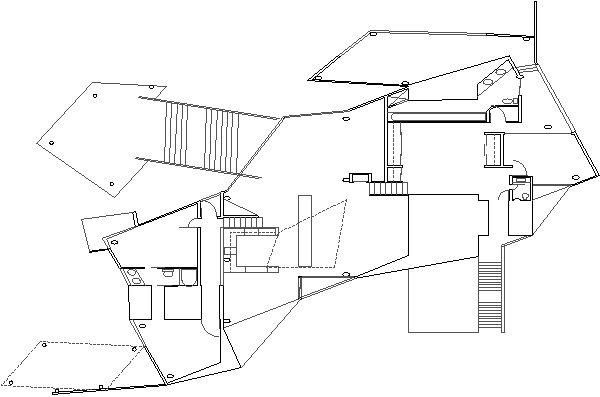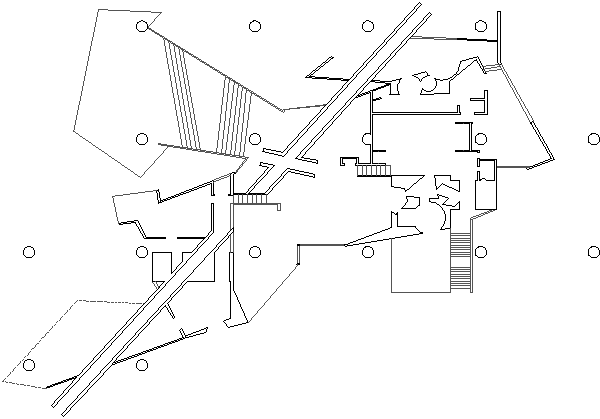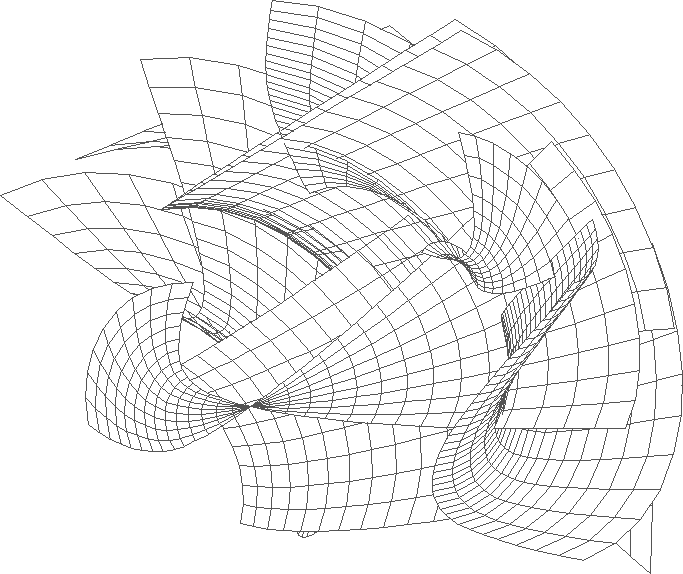2011.11.21 14:00
how convinced are you?
The next time I file my income tax, under 'ocupation' I'll write e-scape architect.
e-scape expanded e-scape
theory e-scape theory
e-scape teaching e-scape
drawing e-scape drawing
e-scape writing e-scape
2011.12.06 21:36
Frank Gehry
peter's canon
2008.08.23 21:06
Personally, I like seeing all the study models of various projects by various architects. I like it because it clearly demonstrates just how pliant architectural designing can be. And I seriously consider the notion that it may well be Gehry that best introduced architectonic pliancy to the profession.
Is architectonic pliancy in somewhat sharp contrast to Eisenman's method? Up to a certain point (in time) I'd say yes. And when Eisenman's work started exhibiting some measure of pliancy, that's where I start to see Gehry's influence.
Have Gehry's designs of late become somewhat predictable and/or seemingly uninspired? Perhaps the pliability metaphor applies here too; perhaps the pliancy has been lost for being stretched too much and too far.
----------
pliant 1 : yielding readily without breaking : bending or folding easily
About a month ago, I purchased Constructing a New Aganda: Architectural Theory 1993-2009. The first essay in the book is "Architectural Curvilinearity: The Folded, the Pliant, and the Supple" (1993) by Greg Lynn. Upon seeing this title I immediately thought of the post above. I have little doubt that it was a long ago reading of this essay (as I used to own several books by Lynn, although now all sold off at eBay around 8 years ago) that lodged the connection of Gehry's architecture and pliancy somewhere in my brain. With the 2008 post, however, I was thinking more along the lines of the pliacy demonstrated by the plan of Gehry's Wagner House (1978)

and the 3-dimensional execution of this plan as well. I have also wondered if the peeling wall detail of a 1970-4 Venturi and Rauch project is percursor to Gehry's pliancy.

| |
2011.12.07 12:24
Frank Gehry
[Y]ou are correct, I do not mean "pliability/pliancy only in literal surface-curving manner," but more of a "yielding readily" (like the varying aspects of the plan of the Wagner House which is on a sloped site). Perhaps it is uncannily (or even appropriately) ironic that the Venturi and Rauch peeling wall detail yeilds from an actual bending wall.
I (re)read about 75% of Lynn's essay last night, and there one sees "the pliant" more in the sense of literal bending and folding, plus also more in concert with suppleness and smoothness--although here too Gehry's architecture is most often used as example. (I feel my reading last night suffered a bit due to no illustrations accompaning this latest version of the essay.)
[T]he pliancy of the Palace of Ottopia is more a demonstration of the drawing pliancy that "laissez-faire" CAD manipulation allows. Yes, the Danteum is there, but so is Hejduk's Bye House, a bit of Perruzzi's Palazzo Massimo and a little bit of myself. (There are several animations of how the design came together which I'll again upload.) Also, the gemmating Danteum plans allude to Eisenman (Aronoff).
Interestingly, within the studies for the Palace of Ottopia, there are some (pliant CAD) manipulations of Gehry's Wagner House--

--which eventally became House for Otto 4.

| |
2012.05.23 09:58
the ethics of parametricism/emergent architectural thought and reification

And adding to the 'unexpected' thinking, imagine the image above as the 2-dimentional 'grid' plan of a city. It's like actually stepping out of the mimicry.
What I mean here by "actually stepping out of the mimicry" is that even the image above is a form of mimicry in that it really isn't a bunch of 3-dimensional curved surfaces in space, rather a coherent group of lines that when perceived cause our brain to imagine a bunch of 3-dimensional curved surfaces in space. To see these lines as a grid plan of a city, however, you really have to adjust your imagination. And I'll say that it is within that act of "adjusting the imagination" where the crux of design happens.
I also asked, "Does it still just boil down to a sophisticated play of/with geometry?" I'd say that for the most part yes, in that the base is (many) points in space. Algorithms are used to define the surfaces between the (many) points in space. Super-fast computation puts all this sophisticated geometry in flux (and potential manufacture). Script writing, or lets say the process, is here a continual "adjusting of the imagination"--literally continually adjusting the image--and that is why is it now easy to believe that process is indeed also design.
I now wonder if the process/design of parametrics is better described as 'artificial design' because it still lacks the ability to imagine itself differently than how it is programmed to imagine itself.
tammuz, as to your other question:
do you think that the reaction against a referential-discursive practice of architecture (and specifically against eisenman) resulted in a pathology founded on the denial of the role of the reference within architecture that we witness within the rhetoric of emergent parametricism, and more widely, within the current strains of materialist architectural thought?
I'd feel more comfortable answering if you clarified or referenced it with some examples, and maybe even adjusted it to what I just wrote above. If I understand your question correctly so far, it hinges on the "pathology founded on the denial of the role of the reference" and it looks like I might think of that more in terms of 'the role of imagination' rather than the adherence to one design ideology or another.
|